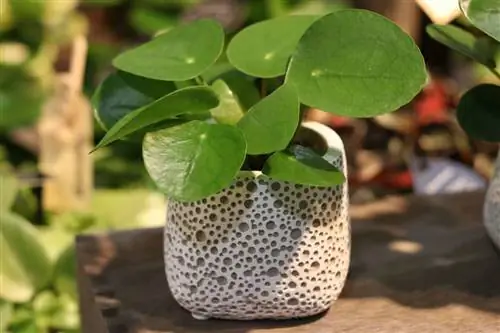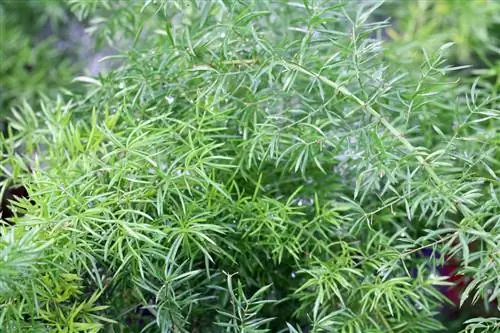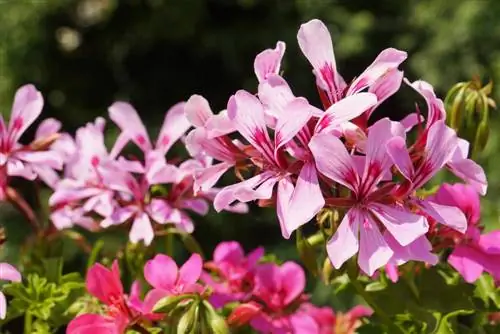- Author admin [email protected].
- Public 2023-12-17 03:39.
- Last modified 2025-01-24 12:45.
Many people know ornamental asparagus (Asparagus densiflorus) primarily as an ornamental green in bouquets. The Asparagus densiflorus also makes a decorative houseplant that, with a little patience and proper care, produces delicate flowers and spreads an attractive, strong scent. Even without these, the plant is a nice addition. However, a few points must be taken into account when cultivating ornamental asparagus, because the South African plant is quite easy to care for - but also sensitive.
Propagate by division
Propagating ornamental asparagus is possible in two ways. Firstly, by dividing the root. The advantage of this is that this method can be carried out very quickly and requires little effort. The following procedure is necessary:
1. Choose the right time
The best time for propagation by division is spring. It is also ideal if the division takes place before the first new shoots appear.
2. Remove soil completely
Asparagus densiflorus in particular forms comparatively large tubers. Therefore, propagation by dividing is easy. However, the entire substrate must first be removed. Brushing and rinsing are suitable for this.
3. Choose the appropriate cutting tool
A sharp, clean knife should be used to cut the roots. In addition, the cut should be made in the middle so that both daughter plants have as many reserves as possible.
4. Dry and use rooting powder
Before the two new plants are placed in fresh soil, you should allow the cut surfaces to dry sufficiently and apply rooting powder to them. Drying can take several hours. However, it is necessary to prevent rot and mold.
5. Planting
Once the steps described have been completed, the two daughter plants are placed in separate containers. The substrate should be fresh and ideally sterilized. A light pour afterwards is enough.
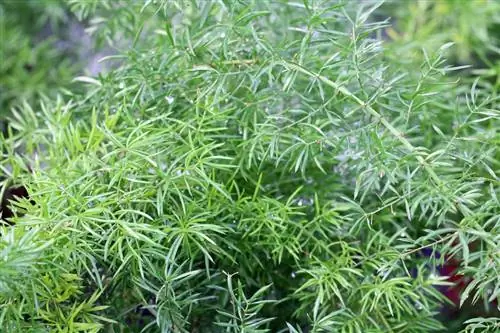
Propagation by seeds
On the other hand, the ornamental asparagus plants can also be propagated from seeds. However, this variant is much longer and more difficult.
The following steps are necessary:
1. Seeds must be processed quickly
The storage period of the seeds is comparatively short. Therefore, the faster they are placed on substrate, the higher the chances of success.
2. Choose the right soil
Planting soil, herb soil or coconut humus are ideal. They contain only a small amount of nutrients and can be easily heat sterilized in the oven or microwave. The substrate is slightly moistened and the seeds are spread on it. Since these are light germinators, the seeds are only lightly covered with soil.
3. Find a suitable location
Normal room temperatures and an east or west orientation are required.
4. Maintain humidity and avoid mold
For germination to occur successfully, the substrate must be moist. However, waterlogging should not occur. In order to avoid daily watering or spraying and thus reduce effort, the cultivation container should be covered. This can be done, for example, with an indoor greenhouse, a glass plate or foil. However, the cover must be removed daily for ventilation so that mold does not form underneath.
5. Prick
The seedlings should be transplanted after about four weeks. Otherwise, it will be difficult to separate the roots without causing damage.
6. Implement
Eight to twelve weeks after pricking out, they are transferred to larger planters. From this point on you can also change the substrate.
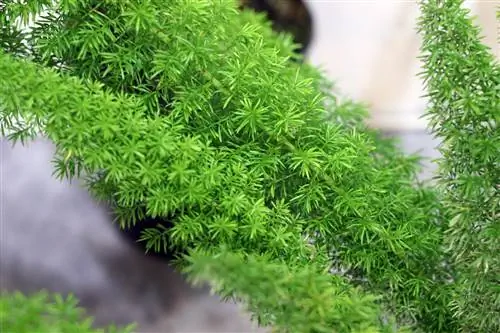
Repotting
Because ornamental asparagus uses so much water, the soil is used up quite quickly. It is therefore optimal to move the Asparagus densiflorus into new substrate every year.
The old soil should be rinsed thoroughly but carefully so as not to carry any pathogens and parasites that may be present into the new substrate. It is advisable to rinse carefully. It should also be noted that the roots of ornamental asparagus grow quickly and strongly. It is not uncommon for this soil and plant to push upwards and out of the planter. They are even capable of permanently destroying flower pots.
Therefore, you should check regularly whether the roots are already growing out of the bottom of the pot. On the other hand, it is advisable not to fill the pot completely with substrate, but to leave some space here and thus room for growth.
Care in hydroponics
In any case, repotting the Asparagus densiflorus should be done in early spring. Then the delicate plant can also be propagated.



